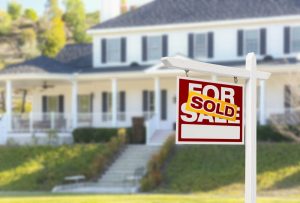 Existing-home sales remain 9.1% higher than last year, although the report from the National Association of Realtors (NAR) showed month-over-month sales fell 6.6% in February to a seasonally-adjusted annual rate of 6.22 million.
Existing-home sales remain 9.1% higher than last year, although the report from the National Association of Realtors (NAR) showed month-over-month sales fell 6.6% in February to a seasonally-adjusted annual rate of 6.22 million.
The median existing-home sales price rose to $313,000, 15.8% higher from one year ago, with all regions posting double-digit price gains.
Inventory at the end of February 2021 remained at a record-low of 1.03 million units, down by 29.5% year-over-year – a record decline. Properties typically sold in 20 days, also a record low.
"Existing home sales are expected to continue higher than last year’s sales pace despite the short supply of homes. With more than 200,000 sellers missing year to date, buyers are facing an ultra-competitive spring market, and prices continue to rise," said realtor.com economist Danielle Hale. "Record low mortgage rates benefited many buyers in 2020, and, although they remain historically low, rising rates are increasing buyer costs, creating a headwind where there was previously a tailwind. Already this year, the monthly cost of a $300,000 loan is up $70, and it could rise another $50 if mortgage rates approach 3.4% by the end of the year, as we expect."
“Despite the drop in home sales for February – which I would attribute to historically-low inventory – the market is still outperforming pre-pandemic levels,” said Lawrence Yun, NAR’s chief economist.
He cautioned of a possible slow down in growth in the coming months as higher prices and rising mortgage rates will cut into home affordability.
“I still expect this year’s sales to be ahead of last year’s, and with more COVID-19 vaccinations being distributed and available to larger shares of the population, the nation is on the cusp of returning to a sense of normalcy,” Yun said. “Many Americans have been saving money and there’s a strong possibility that once the country fully reopens, those reserves will be unleashed on the economy.”
First-time buyers were responsible for 31% of sales in February, down from 33% in January and from 32% in February 2020.
Distressed sales—foreclosures and short sales—represented less than 1% of sales in February, equal to January’s percentage but down from 2% in February 2020.
Hale says that, looking ahead, "the large and still growing cohort of consumers reaching prime homebuying age will keep interest high, but whether shoppers can translate that desire into ownership will depend on whether shopper incomes rise along with economic growth, buyers are willing to let housing costs take up a bigger share of their monthly budgets, or whether more homes for sale help stem the pace of home price increases."

 theMReport.com Your trusted source for mortgage banking news
theMReport.com Your trusted source for mortgage banking news








